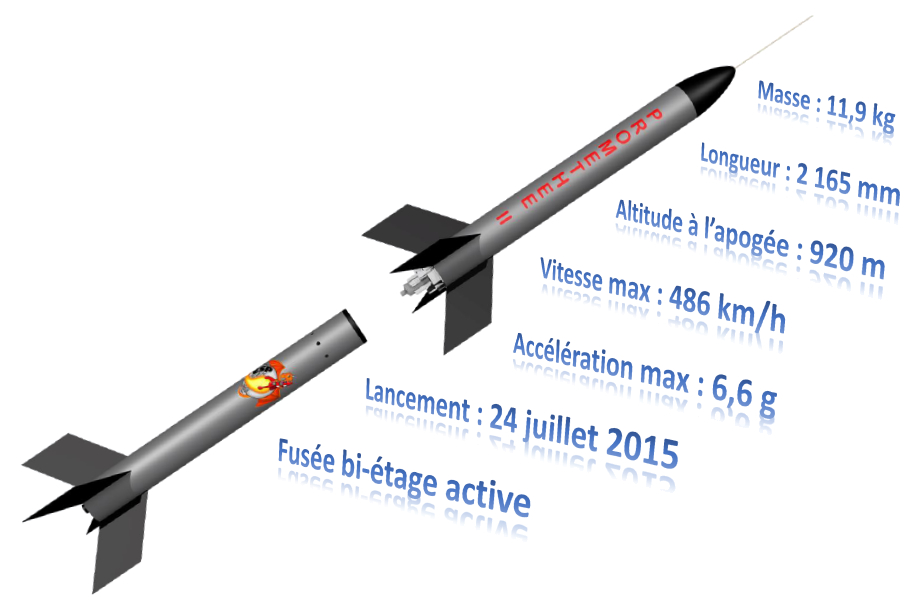
Prométhée II is an experimental rocket, designed and made by ISAE-ENSMA students, launched during July 2015 C’Space. It is an active two-stage rocket, i.e. with a second stage propelled by a second engine.
In this project, the integration of the ignition device of the second propellant and all the physical and electronic safety features inside the rocket itself was a real technical challenge with :
- Mechanical sensors at the separation and parachute doors, to better control these critical operations.
- GPS, accelerometers and gyroscopes to check the orientation of the rocket when the second stage is ignited.
Prométhée II also included an experiment to measure deformation on certain mechanical parts:
- 2 strain gauges placed on the separation ring made it possible to determine the bending stresses in the rocket.
- 2 other gauges were located on the thrust ring of the second stage, in order to calculate the effort delivered by the thruster, to go up to its thrust curve and its specific impulse.
No less than 9 microcontrollers, 7 batteries and 16 electronic cards were necessary to power the two stages and to isolate the experiment from the main circuit.
Prométhée II was launched during the annual national launch campaign organized by CNES and Planète Sciences, C’Space, in July 2015 on the basis of the 1st RHP of Tarbes.
Many unforeseen events occurred throughout the qualification week. After having had to redo the ailerons, the whole experiment and telemetry had to be reprogrammed to improve the recording frequency. And finally, one of the separation servomotors of the two stages gave up less than 24 hours before the end of the checks. Despite all these problems, the rocket was able to be qualified in time. But the first test flight didn’t go as planned.
During the propulsion phase, the hatch of the first stage was torn off. The parachute thus released was destroyed by the propellant flame. However the rocket, thanks to the sensors, detected the anomaly and reacted as programmed by cancelling the separation of the 2 stages, and by inhibiting the ignition of the second engine. The parachute of the 2nd stage opened at the apogee and brought back the whole rocket to the ground.
Flight assessment
Analysis of the results of the on-board experiment concluded that the flight-induced stresses peaked shortly after take-off, causing the magnetic suction cup holding the door to fail after 2.63 seconds. At the same time, the strong jolts produced caused the 3 relays that managed the ignition safety of the second engine to switch manually, triggering the second-stage igniter. Fortunately the 1st test flight of the two-stage rockets had to be carried out with an inert second stage. In spite of that the damage caused prevented us from making the flight with two engines.
